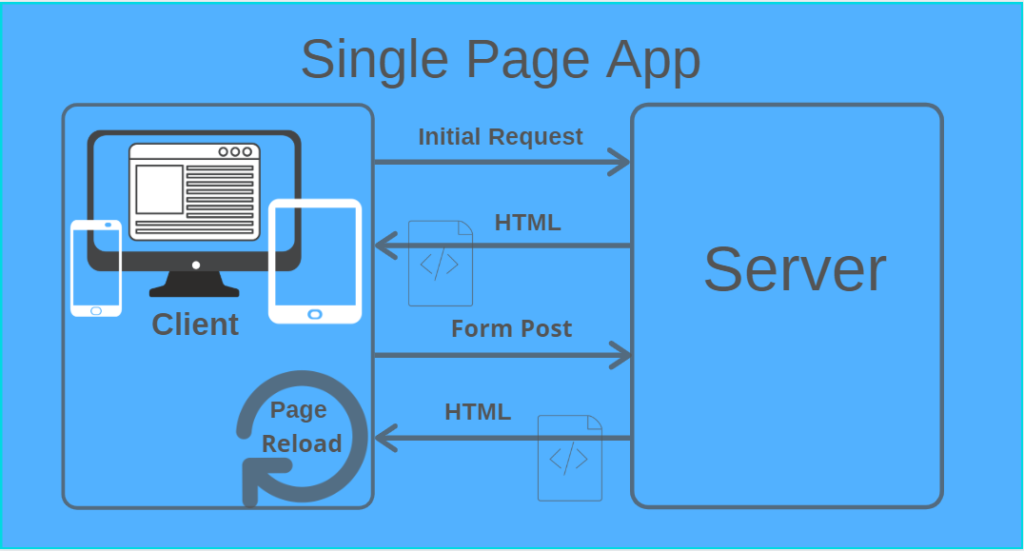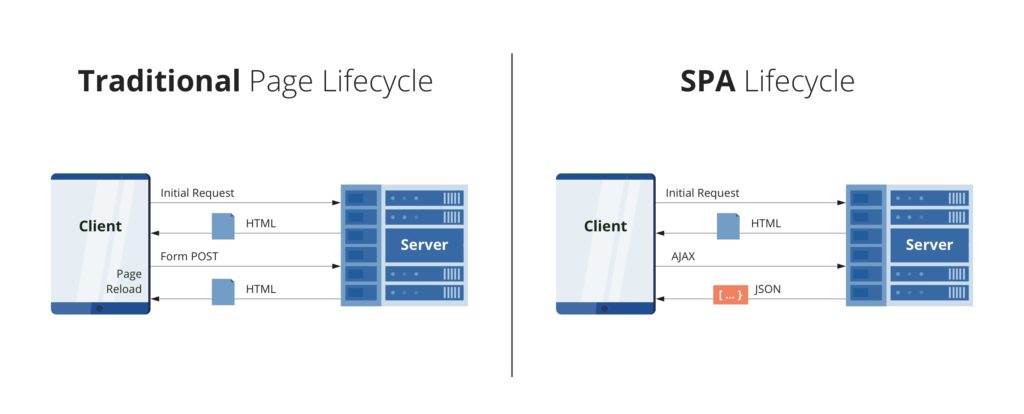
Single Page Applications
Just to begin with, you’re most likely using Single Page Applications (SPAs) already.
Single Page Applications are a great tool for making incredibly engaging and unique experiences for your users.
Some Single Page Applications examples are Gmail, Google Maps, AirBNB, Netflix, Pinterest, Paypal, and plenty more are using SPAs to build a fluid, scalable experience.
However, in the past SPAs have left marketers out in the dark when it comes to managing content. Luckily, it’s now possible to pair your SPA with the right CMS to give both developers and marketers the level of control they need.
I- What are Single Page Applications?
A Single page application (SPA) is a single page (hence the name) where a lot of information stays the same and only a few pieces need to be updated at a time.
For example, when you browse through your email you’ll notice that not much changes during navigation - the sidebar and header remain untouched as you go through your inbox.
The SPA only sends what you need with each click, and your browser renders that information. This is different to a traditional page load where the server re-renders a full page with every click you make and sends it to your browser.
This piece by piece, client side method makes load time must faster for users and makes the amount of information a server has to send a lot less and a lot more cost efficient. A win-win.
II- How Do Single Page Applications Work?
The SPA is a web application or website that interacts with the user by dynamically rewriting the current page, rather than loading entire new pages from the server.
This approach voids interruption of the user experience between successive pages. That makes the application behave more like a desktop application.
On most websites there is a lot of repeating content.
Some of it stays the same no matter where the user goes (headers, footers, logos, navigation bar, etc), some of it is constant in just a certain section (filter bars, banners), and there are many repeating layouts and templates (blogs, self-service, the google mail setup mentioned above).

By transferring the painting work (page rendering) from the server to the client (you) the page can be dynamically rewritten, instead of going through an entire reload.
III- Why Use Single Page Application?
The main advantage of single-page applications is its speed. Most resources SPA needs (HTML + CSS + Scripts) are loaded at the launch of the app and don’t need to be reloaded during the usage. The only thing that changes is the data that is transmitted to and from the server. As a result, the application is very responsive to the user’s queries and doesn’t have to wait for client-server communication all the time.

Single-page applications are excellent when you have a team of developers working together. It allows backend developers to focus on the API, while the frontend developers can pay more attention to creating the best user experience based on the backend API and implementing a beautiful user interface.
Debugging a single-page application is also easy using the Chrome browser since it has special tools for Angular Batarang and React (the technologies used for SPAs.) Using a console, you can monitor network operations as well as investigate various page elements and associated data.
Caching process is also quite efficient – the application sends only one request, stores all data transmitted, and can use this data. This is especially important at times when the user can have poor connectivity – s/he can still use your app since it’s synchronized with the server when the connection improves.
IV- WHEN TO USE A SPA
You might be asking, “When should I use a single page application?” When you have a business or a personal website that needs a dynamic platform and small data volume, the single-page application is a good idea. It is also a great option if you are planning to develop a mobile app in the future, since, as we mentioned above, the backend API can be used for both the web and mobile apps.
The main drawback is the SEO, but the architecture is suitable for Software-as-a-Service (SaaS) platforms, closed communities, and social networks (which is why Facebook uses it). The reason for this is that these sites don’t need optimization for search on Google.
Did you enjoy this blog? Please leave comments on what you think and contact us if you want to take our services 😊.


